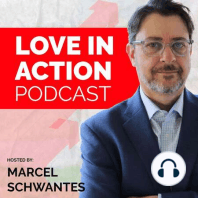38 min listen
Building a High-Growth Team with Whitney Johnson
FromLove in Action
ratings:
Length:
37 minutes
Released:
Oct 31, 2019
Format:
Podcast episode
Description
Whitney Johnson has been recognized as one of the world’s foremost management thought leaders by Thinkers 50 and Fortune magazine. She is an advisor, speaker and host of the weekly podcast, Disrupt Yourself. She joins Marcel Schwantes to discuss her recent book, Build An A-Team: Play to Their Strengths and Lead Them Up the Learning Curve, in which she shows leaders and managers how to reduce turnover and enhance loyalty by leading their team members up their current learning curve and designing their jobs to maximize learning and engagement.High growth organizations need high growth individuals. Whitney’s why is to provide ideas to make it less scary to continue to grow and develop. When you’re learning and growing, you are happy. [4:02]Marcel asks how music has influenced Whitney’s work. She responds that when she’s writing or giving a speech, she infuses musicality and structure. Also, music has taught her how to listen and interact deeply with others. This impacts her speeches and her coaching. [5:23]We disrupt ourselves many times throughout our lives. The difference between business and personal disruption is that with personal disruption you're both the disrupter and the incumbent. [8:09]If leaders allow their people to disrupt themselves, to learn and leap, these employees will help the business be a high growth organization. If you let them disrupt themselves, you as an organization will not get disrupted, Whitney says. [8:52]The S-curve of learning is a framework for high employee engagement. Disruption is really about people. Whitney describes the S-curve framework and what managers can do at each point to lead their team along. [10:00]Whitney lists the seven accelerants for leading people along the S-curve of learning:Take the right risks;Know your distinctive strengths;Embrace constraints or impose the right constraints;Battle entitlement;Step back in order to grow;Give failure its due;Be driven by discovery. [13:00]This framework of personal destruction allows you to accelerate and move up the S-curve quickly so that you can learn, leap and repeat quickly. The faster you can do that, the higher growth individual you become. [21:01]When someone you’re managing is at the top of the curve, you can help push them back into the sweet spot by either getting them a coach, letting them mentor others or by stretching them. [21:35]Marcel asks how fear-based management styles affect the learning curve. Whitney says that fear means that there isn’t enough for me as a manager. "So when I have people on an S-curve and they're in the sweet spot, I might start to feel threatened by them." Another way that fear affects the learning curve is when a leader has a high performer on his team who is ready to leap forward, the leader may not want to allow the team member to do so because it would affect his or her future prospects. [25:19]Organizations whose business models are built on command and control find it hard to create a sense of belonging because the structure itself does not allow for it. [27:25]The best advice Whitney would give to managers is to understand where your people are on the S-curve and manage them accordingly. When you do that, you will find that everyone is a high performer. [30:42]ResourcesWhitneyJohnson.com Disrupt Yourself Podcast, episode 120 Email Marcel: marcel@loveinaction.club
Released:
Oct 31, 2019
Format:
Podcast episode
Titles in the series (100)
What You’re Getting Wrong About Leadership with Ashley Goodall by Love in Action
